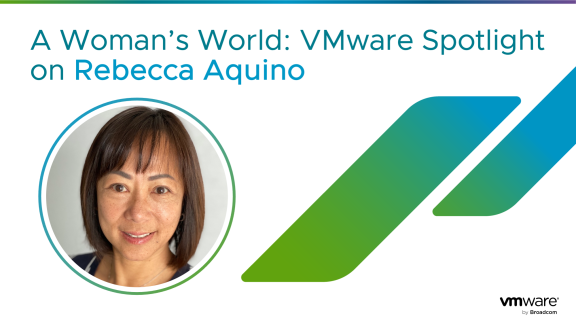This blog is part of a series to help organizations of any size optimize their security. Our experts provide insights and recommendations based on common security use cases, customer questions, and security software developer needs.
Cloud services offer organizations of any size the advantages of cost efficiency, scalability, and flexibility. This access to technology capabilities allows businesses to focus on their core competencies and strengths and outsource infrastructure management.
Cloud computing also provides access to cutting-edge technologies such as artificial intelligence, machine learning, and big data analytics and allows organizations to embrace sustainable practices by sharing infrastructure resources.
The considerable computing power and resources clouds provide turbocharge operations, but also present unique cybersecurity landscapes depending on your choice of clouds to protect your data and IT environment.
Public cloud cybersecurity considerations
Many organizations use third-party public cloud providers such as Amazon Web Services, Google Cloud, and Microsoft Azure that are available to the general public. Services are shared among multiple organizations and customers, making them cost-effective and highly scalable. The following are security considerations for public cloud:
- Shared responsibility model – Cloud providers secure their infrastructure including physical security and networking, while customers are responsible for securing data and applications.
- Identity and access management (IAM) – Strong IAM policies must be in place to control access to cloud resources and their actions, including Zero Trust policies and multi-factor authentication.
- Data encryption – Encrypt data at rest and in transit. Cloud providers may offer encryption services, but users must configure and manage them.
- Network security – Implement micro-segmentation of resources, network security groups, and firewalls to control and manage traffic.
- Logging and monitoring – Enable logging and monitoring services to detect and respond to security incidents.
- Compliance – Ensure compliance according to applicable industry regulations such as GDPR or HIPAA and follow best practices for data and privacy.
Private cloud cybersecurity considerations
Private clouds offer a higher degree of isolation since they are dedicated to a single organization. They may be hosted on-premises or with a third party, and offer greater control, security, and customization than a public cloud. This transfers responsibility for cybersecurity directly into your hands and increases infrastructure costs. Considerations include:
- Physical security – Ensure physical access to data centers and server rooms is tightly controlled with security cameras, biometric authentication, and restricted access.
- Network segmentation – Implement network segmentation to isolate different parts of the private cloud and apply strict firewall rules.
- Patch management – Regularly patch and update all software and hardware components to address security vulnerabilities.
- Authentication and authorization – Implement strong authentication mechanisms and access controls to prevent unauthorized access.
- Incident response – Develop an incident response plan and regularly test it to ensure you can respond effectively to security incidents.
Hybrid cloud cybersecurity considerations
Hybrid clouds combine elements of both public and private clouds, allowing data and applications to be shared between them. Organizations use hybrid clouds to achieve flexibility, scalability, and data control while leveraging public cloud resources. Considerations for securing hybrid clouds include:
- Integration challenges – Ensure consistent security policies, controls, and governance across environments.
- Data flow – Understand the flow of data between public and private clouds and implement encryption and access controls.
- Identity federation – Use identity federation solutions to provide single sign-on (SSO) and consistent identity management across cloud types.
- Data backup and recovery – Establish robust backup and disaster recovery strategies for data flowing through and residing in both cloud types.
- Compliance – Ensure compliance with regulations applicable to your industry for all data stored and processed in both cloud types.
- Vendor risk management – Assess the security practices of your public cloud provider and any third-party services used in your hybrid environment.
Sovereign cloud cybersecurity considerations
Sovereign clouds are sometimes referred to as government or national clouds. They’re a specific form of cloud infrastructure designed to meet the needs of government entities or organizations subject to strict data sovereignty and regulatory requirements. Sovereign clouds are typically hosted within specific physical borders such as country borders by or on behalf of a government. Considerations for securing sovereign clouds include:
- Data sovereignty – Sovereign clouds prioritize keeping data within a country’s borders to comply with local laws and regulations, limiting the use of global cloud providers and often requiring a dedicated, in-country cloud infrastructure.
- Regulatory compliance – Government clouds must adhere to specific regulatory and compliance requirements such as FISMA (Federal Information Security Management Act) in the US or similar regulations in other countries.
- Physical security – Robust physical security measures are crucial to protect sovereign cloud data centers, including strict access controls, surveillance, redundancy power, and connectivity availability.
- Network security – Implement strong network security controls such as a virtual private network (VPN) for secure communication protocols.
- Data encryption – Encrypt data to ensure confidentiality and integrity with strong encryption standards for data at rest and in transit.
- Identity and access management – Strict access controls and identity management should include well-defined roles and permissions for all employees and personnel.
- Incident response – Develop and regularly test an incident response plan specific to government cloud operations for timely detection and response to security incidents.
What about other types of clouds?
Other types of clouds require many of the same cybersecurity considerations noted above. Cloud types such as edge, serverless, or fog computing all require identity and access management, data encryption, regulatory compliance, network security, and incident response capabilities.
Learn more about security for your unique environment
If you’re not sure about your security posture or the level of vulnerability in your organization’s IT environment, a security assessment can help you develop a clear view of your current state and possible remediations needed. You can also rehearse real-time scenarios and threat-hunting through our Cyber Defense Simulation service. Visit the Professional Services for Security resources section for overviews of the different types of assessments available, and contact us at [email protected] to learn more.
For more support, read the other blogs in this series which include tips for building up cybersecurity skills, a review of the cybersecurity mesh architecture framework, and practical ways to secure APIs.





